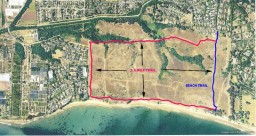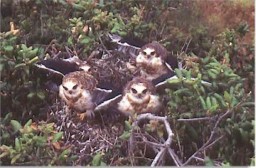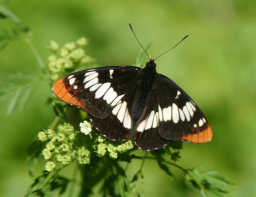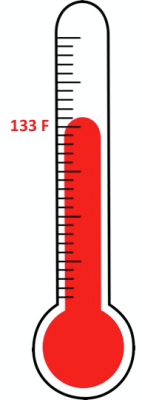Since things have changed quite a bit since our last report, it was time for a Summer Walk on More Mesa. Taking the same route as reported in our previous Update we noted two very heartwarming and special sights.


First, the White-tailed Kites that historically nest on the east side of More Mesa have fledged two youngsters this year! This is extremely good news since drought years have produced a very small number of youngsters … for More Mesa and indeed the whole Goleta Valley. You can find all manner of interesting information on the importance of More Mesa’s kites on pages 29-33 of our More Mesa Handbook.

With summer comes butterflies when More Mesa hosts up to 17 different species of these beautiful creatures. In addition to the Buckeyes reported in our last issue summer brings the lovely, and large, Anise Swallowtails that lay their eggs on our ubiquitous fennel. For a detailed discussion of the Swallowtail and its appearance on More Mesa see our late summer issue for 2017.
If you have taken the walk above, and parked on Puente Drive you will have noticed how many cars have been there … almost every day this summer. The extreme heat has brought hundreds of visitors to More Mesa and the beach below. Which brings us to the story below …
A Legend From the Past
The intense hot spell we have been experiencing lately, with its record breaking temperatures, seemed to echo a story I had come across while researching for an article on More Mesa’s asphalt mine in a previous issue. According to our colorful, always interesting, and “go-to” reference Goleta, the Good Land (by Walker A. Tompkins), a scorching one-day heat wave occurred in the Goleta Valley on June 17, 1859. Further, it was the first and only simoon ever recorded in North America. Never having heard the word “simoon”, I looked it up. What’s a simoon anyway? It’s a strong, dry, dust-laden local wind that is caused by intensive ground heating under a cloudless sky. The word simoon is Arabic and describes winds that occur in the Sahara, Israel, Jordan, Syria, and the deserts of Arabian Peninsula.
 So what did happen in June 1859? According to Tompkins, it was about 80 F by noon on that fateful day… a little high for our lovely Goleta Valley … known for its moderate temperatures. Then, about 1 PM according to Tompkins, a ‘blast of superheated air’ came from the direction of Santa Ynez Peak and hit the Goleta Valley, alarming the residents and sending them scurrying for cover inside thick-walled buildings. Tompkins wrote that by 2 PM the temperature had reached an incredible 133 F, with the northwest wind bringing ‘great clouds of impalpable dust’. People reportedly took refuge in several places including behind the 3-foot-thick walls of the Daniel Hill adobe. Calves, rabbits, and cattle died on their feet according to a “government report”, and fruit fell from trees to the ground, scorched on the windward side. Birds fell dead from the sky and others flew into wells in search of cooler air and drowned. About 5 PM the searing, hot wind died down, the report said, the thermometer ‘cooled off’ to 122 F.
So what did happen in June 1859? According to Tompkins, it was about 80 F by noon on that fateful day… a little high for our lovely Goleta Valley … known for its moderate temperatures. Then, about 1 PM according to Tompkins, a ‘blast of superheated air’ came from the direction of Santa Ynez Peak and hit the Goleta Valley, alarming the residents and sending them scurrying for cover inside thick-walled buildings. Tompkins wrote that by 2 PM the temperature had reached an incredible 133 F, with the northwest wind bringing ‘great clouds of impalpable dust’. People reportedly took refuge in several places including behind the 3-foot-thick walls of the Daniel Hill adobe. Calves, rabbits, and cattle died on their feet according to a “government report”, and fruit fell from trees to the ground, scorched on the windward side. Birds fell dead from the sky and others flew into wells in search of cooler air and drowned. About 5 PM the searing, hot wind died down, the report said, the thermometer ‘cooled off’ to 122 F.
Supposedly the temperature in the Goleta Valley hit 133 F, and went into the record books as the highest temperature for all of the U.S. … remaining a record for 54 years, when it was barely surpassed by a 134 F reading in Death Valley.
I thought this was a thrilling story and all More Mesa supporters would love it!
Stay Cool and Enjoy More Mesa!